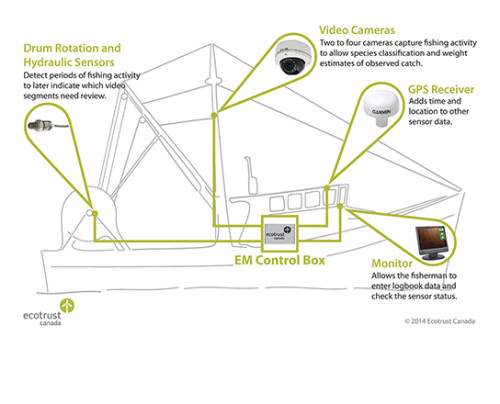Managing the decline in New England’s commercial fishery has long been a delicate dance among fishermen, regulators and scientists.
The scientists estimate how many fish are available for harvest, and regulators use those estimates to allot catch shares among various groups of fishermen, called “sectors.”
It doesn’t always work smoothly.
Fishermen question the validity of the science, saying that they see more fish than the estimates would indicate. Regulators are influenced by members of Congress, who represent fishing communities, not fish, and are concerned with the economic survival of those communities.
Scientists say that they are doing the best they can with the data available, but what they can see paints a much darker picture than what the fishermen report.
Fortunately, there may be a way to produce data that everyone can be confident in: electronic monitoring.
Currently, professional monitors go out on fishing boats about 20 percent of the time, cataloging what the boats pull up in their nets and what they throw overboard.
The information they bring back is valuable, but there are problems with the system. The fishermen have to pay for the live monitors, and they are expensive. That’s especially true for boats leaving from rural areas, where the captain has to pay the travel expenses and accommodations for a monitor who is not locally based.
And scientists are convinced that having a monitor on board changes the behavior of the fishermen, creating less confidence in their observations.
An electronic system offers many advantages. Once installed, electronic monitors would be much less expensive than live monitors, and they would produce better data because they would operate on every trip.
Funds to help pay for electronic devices are now part of the budget negotiations in Washington, and this is a level of involvement that would be a constructive intrusion by members of Congress.
The federal government has supplied more than $150 million in federal disaster relief in recent years, to sustain communities that have been affected by shrinking catch shares. Members of Congress have indicated that there will not be any more disaster declarations. The fisheries are in decline, and no one should be surprised now.
But an investment of about $2 million in monitoring equipment would help these communities in a more sustainable way. Better data will let regulators manage the stocks that are plentiful more efficiently, which will give people in the fishing industry more certainty, and allow them to use their resources wisely.
This is an opportunity for New England’s political leaders to play a positive role in the regulation of a troubled fishery. An investment in electronic monitors is an investment in preserving a way of life under threat by environmental change.
Send questions/comments to the editors.



Comments are no longer available on this story